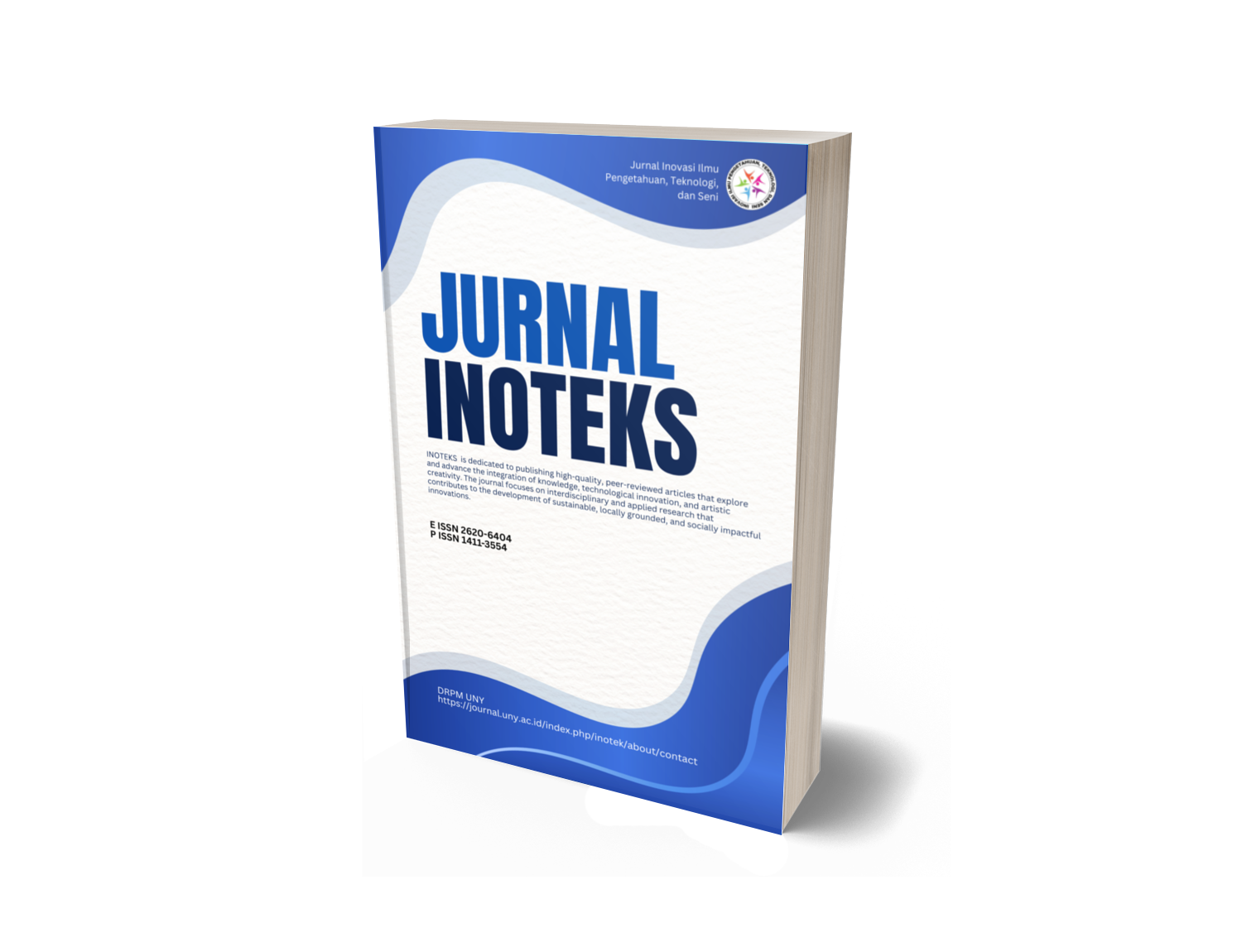LABORATORY PRACTICE MODEL TRAINING OF HEAT ANDTEMPERATURE BY VOICE THERMOMETER EQUIPMENT FORUNVISIBLE AND UNAUDITORY STUDENTS
DOI:
https://doi.org/10.21831/ino.v17i2.3358Abstract
Basically this activity (Penelitian dan Pengabdian Masyarakat) haspurpose that is given to the sains teachers have to leads the unvisible andunauditory students so they can do Voice Thermometer well, in the Heat andTemperature lesson program. The Specific purposes of the activity are : (1)Leads the inclusive shcool teachers in the operation of Voice Thermometerin the realistic sains experiment, which is used by unvisible and unauditorystudents. (2) Write the experiments modules sheets to accommodateunvisible and unauditory students. (3) Make evaluation model of processesand products, that will be done by unvisible and unauditry students.The methods to plan the research use training in operation the VoiceThermometer and make the module sheets for unvisible and unauditorystudents, besides that also discuss the implementation sains learning bycontructivism approach and design the learning strategies. As the membersof the research are the inclusive school teachers for the unvisible andunauditory students in Yogyakarta. The sample of learning process is doneby students of Yakatunis Inclusive Junior High School (Sekolah LuarBiasa) and SLBN 2 Bantul. And the training research is held in two places,SLBN 1 Bantul and SLBN 2 Bantul.The results of the research and training activity are : (1) The Sainsteachers of inclusive school have been skilled in Voice Thermometeroperation. It gives quantitative measurement to accommodate the learning ofHeat and Temperature for unvisible and unauditory students. (2) Sainsteachers of inclusive schools can write the practce modules of Heat andTemperature for unvisible and unauditory students. (3) Sains Teachers ofinclusive schools can apply the evaluation model of process and product ofHeat and Temperature learning for the unvisible and unauditory students.The teachers appreciate of the new leraning equipment and learning strategythat have been developed by the research team, so the teachers desired toattend the next learning as they had been done before, and they suggest thelearning media that has been developed by the research team is usefull tolead the Sains learning.
Downloads
Published
2013-08-01
How to Cite
dan Dadan Rosana, J. A. B. P. (2013). LABORATORY PRACTICE MODEL TRAINING OF HEAT ANDTEMPERATURE BY VOICE THERMOMETER EQUIPMENT FORUNVISIBLE AND UNAUDITORY STUDENTS. INOTEKS: Jurnal Inovasi Ilmu Pengetahuan,Teknologi, Dan Seni, 17(2). https://doi.org/10.21831/ino.v17i2.3358
Issue
Section
Articles
Citation Check
License
- Authors certify that the work reported here has not been published before and contains no materials the publication of which would violate any copyright or other personal or proprietary right of any person or entity.
- Authors transfer or license the copyright of publishing to Jurnal Civics: Media Kajian Kewarganegaraan to publish the article in any media format, to share, to disseminate, to index, and to maximize the impact of the article in any databases.
- Authors hereby agree to transfer a copyright for publishing to Jurnal Civics: Media Kajian Kewarganegaraanas a Publisher of the manuscript.
- Authors reserve the following:
- all proprietary rights other than copyright such as patent rights;
- the right to use all or part of this article in future works of our own such as in books and lectures;
- use for presentation in a meeting or conference and distributing copies to attendees;
- use for internal training by author's company;
- distribution to colleagues for their research use;
- use in a subsequent compilation of the author's works;
- inclusion in a thesis or dissertation;
- reuse of portions or extracts from the article in other works (with full acknowledgement of final article);
- preparation of derivative works (other than commercial purposes) (with full acknowledgement of final article); and
- voluntary posting on open web sites operated by author or author's institution for scholarly purposes, but it should follow the open access license of Creative Common CC BY-NC-SA License.









